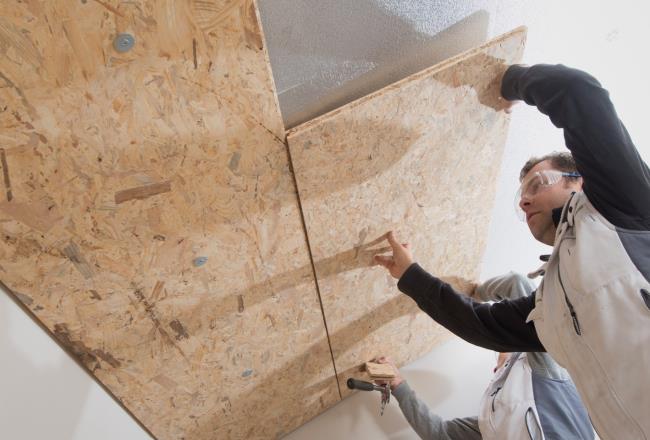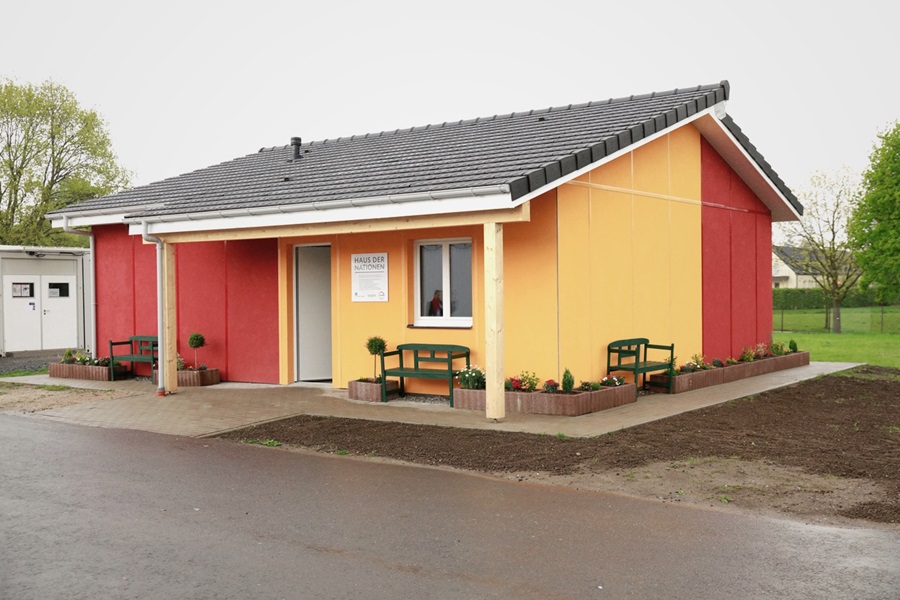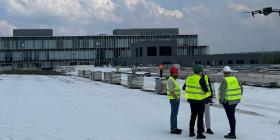
Building on the power of high-performance polyurethane insulation
Did you know that at least 40 percent of global energy consumption and over a third of greenhouse gas emissions can be attributed to buildings? The good news is that rigid polyurethane (PU) and polyisocyanurate (PIR) foams are a top choice for reducing energy consumption, which leads to conserved fossil resources, cost savings and reduced carbon dioxide (CO2) emissions.
From the roof to the basement, PU and PIR rigid foams can be used in insulation boards for residential, industrial and commercial buildings. Sandwich panels with two metallic cover layers also benefit from these foams for large-area and efficient insulation in industrial and commercial buildings. Additionally, PIR foams are more robust, helping achieve better fire protection classifications than PU rigid foam.
Insulation requires space, which is especially limited in urban areas that lack land and room for installation. When compared to traditional housing materials, such as expanded polystyrene (EPS), rock wool or glass wool, these rigid foams offer at least 30-50 percent higher thermal performance, creating a thinner wall. The end result is maximized living space—a win-win for both builders and residents.
Going digital
Digitalization is impacting every market, including the construction industry. With this in mind, we’re helping customers optimize the production of sandwich panels through our Digital technical Services (DtS). Digital, computer-aided chemistry and machine learning models will help to increase efficiency and cost savings, while reducing waste and improving quality through more stable processes.
Research projects for innovative insulation
We’re continually pushing boundaries to make polyurethane the insulation material of choice-addressing challenges through our material developments.Here is a snapshot of our latest polyurethane insulation projects:
- New formulations based on the next generation of propellants (HFOs) that, when compared to pentane, reduce thermal conductivity from 0.023 W/m·K to 0.017 W/m·K
- Low-cost PU and PIR systems, formulations and processing improvements that drive competitiveness for customers
- Polyesters for enhanced fire performance and potentially reduced carbon footprint
- New laydown technology for higher quality panels and boards
- A new generation of plastic casting rakes for faster panel production
- Off-site panelized walls, known as PUReWall™, for the construction of insulated walls using polyurethane foam and polyiso boards
- Methodology for tuning the temperature-dependent R-value (improving cold temperature performance) to regional seasonal temperature variation.

Setting sights on sustainability
Sustainable material developments are a top priority not only for us, but also for customers and the construction industry as a whole.
With this mind, we’re exploring the use of alternative raw materials and even using them in our own production to reduce our dependence on fossil resources. For instance, we developed a unique method for deriving aniline from bio-based raw materials. Ultimately, our hope is that this bio-aniline can be used to produce methylene diphenyl diisocyanate (MDI)—a key component for rigid foam. We’re also working on a CO2-based raw material for rigid PU foam.
We’re taking our commitment to sustainability a step further by collaborating with industry partners to create a circular economy for polyurethanes. For example, we’re an active member of Carbon4PUR—a consortium of 14 partners from seven European countries—to investigate how flue gas from the steel industry can be used to efficiently and sustainability produce polyurethanes. As a result, this will save crude oil—the raw material used in conventional methods. We also belong to the PUReSmart project, which explores ways to transform the life cycle of PU products into a circular economy model.
Affordable housing for all
We believe everyone should have access to affordable housing. Together with customers, government agencies and NGOs, we’re developing cost-effective solutions based on our technologies and products for low-income populations, such as those in Africa and Asia. In fact, we’ve successfully used PU rigid foam for a variety of affordable housing projects in Asia.
"Polyurethane insulation is a versatile market with rapidly changing requirements and we’re driving innovation by putting our broad portfolio into practice, staying up-to-date on the latest challenges and driving new developments for a brighter future."
- Saves space while featuring a high compressive strength.
- Easy-to-handle.
- Excellent dimensional stability.
- Durable, lightweight and cost-efficient.
- Fulfills burning classifications in compliance with building codes.













